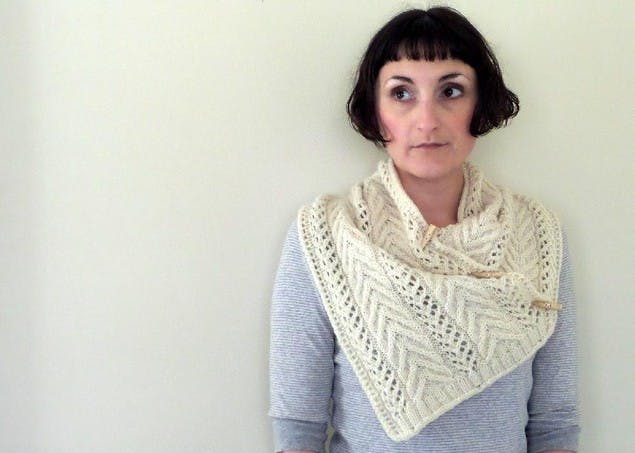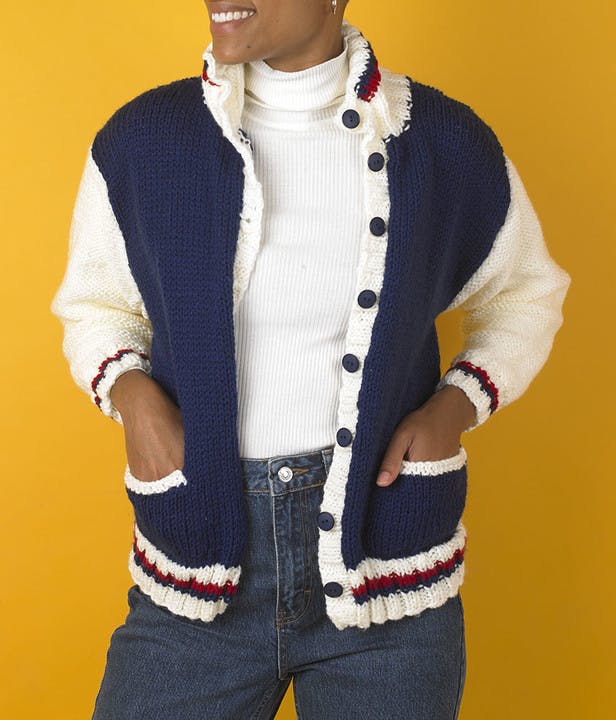5 ways to knit a buttonhole
Published on May 7, 2015 By Elizabeth Bagwell 3 min readWhether you’re planning ahead or forgot a buttonhole entirely, Elizabeth Bagwell helps you find the right buttonhole for your project.
Many patterns will give explicit instructions for how to knit a buttonhole and tell you what size buttons to use. It’s a good idea to add a buttonhole to your swatch to confirm that your choice of button will work with the designer’s choice of buttonhole. If no guidance is given, you have free reign – you can check out our guide to the different types of buttons and fastenings if you feel stuck!
Ideally buttonholes should be slightly smaller than the button used so that the button fits through the hole, but doesn’t slip back out.
Button up with these patterns
Whether you're adding a button after you've finished your knitting, or deciding which technique would be best for your project, here are 5 types of buttonhole to try:
1. Yarn over buttonhole
Possibly the easiest buttonhole to knit. Work to the place you want the buttonhole to be, then k2tog, YO.
The combination will form a neat, round hole without altering your stitch count. These buttonholes are fairly small, so are best for smaller buttons. Like to try the yarn over buttonhole? Amy Kasper will talk you through step by step!
2. Double yarn over buttonhole
For a larger buttonhole you can do a double yarn over, and compensate by doing an extra decrease:
(k2tog, YO) two times, SSK.
A double yarn over simply means you wrap the yarn around the needle twice. To keep the integrity of the buttonhole, K1, P1 (or P1, K1) into the yarn over stitches on the following row. You can work all other stitches as set by the pattern.

3. Single-row buttonhole
If you’re using wide buttons or fine yarn, you may need a larger buttonhole. Cast off stitches on one row, then cast on the same number at that spot on the following row. This creates a horizontal slit in your knitting which you can slip a button through. Amy explains the traditional slit buttonhole in detail here.
4. No-buttonhole buttonhole
If you’re working with a chunky yarn or a loose tension, you may not need to knit a buttonhole at all as the gaps between the stitches may be wide enough to fit your button through. Check how well this works for your project by testing your buttons on your swatch or first rows of knitting. This technique works particularly well for long, thin toggle-shaped buttons.

5. After-thought buttonhole
Forgot to put a buttonhole in your work? You can add one after the fact by simply snipping a stitch or two and carefully sewing in the ends. The technique was popularized by Elizabeth Zimmerman (Grand Dame of knitting).

